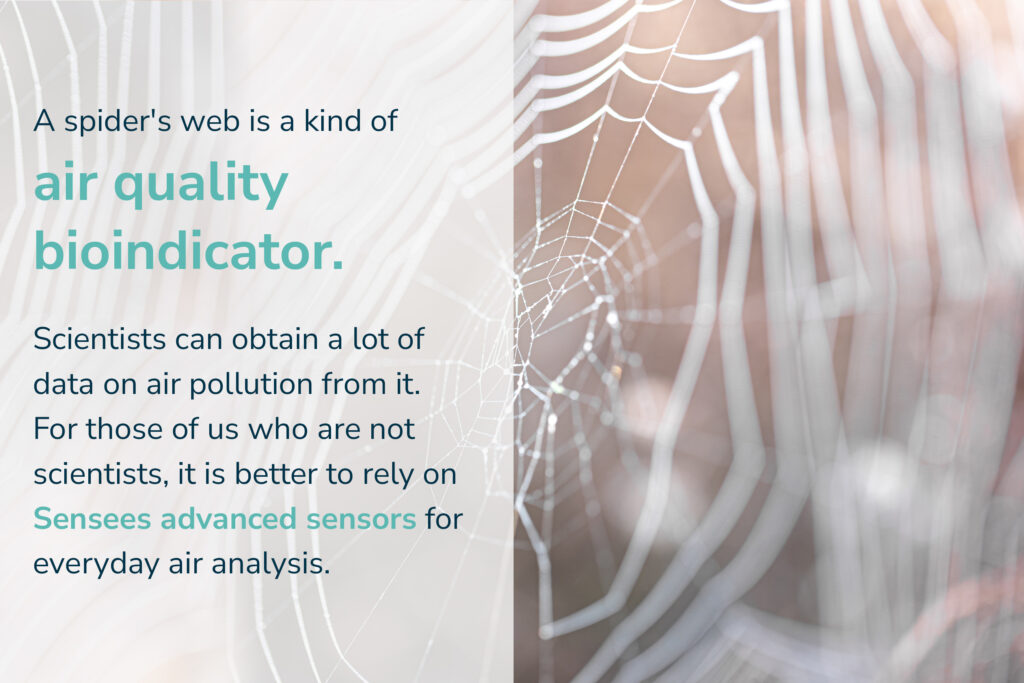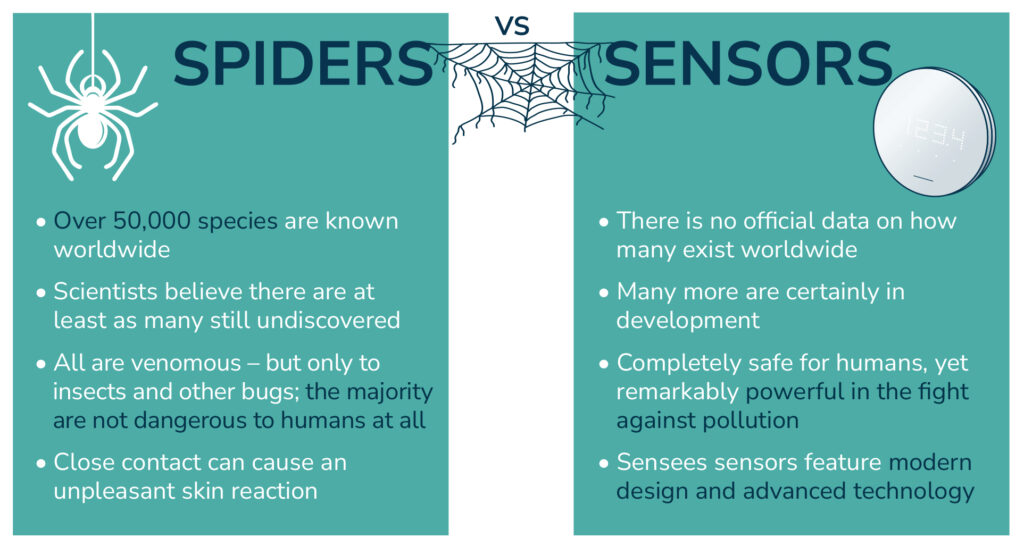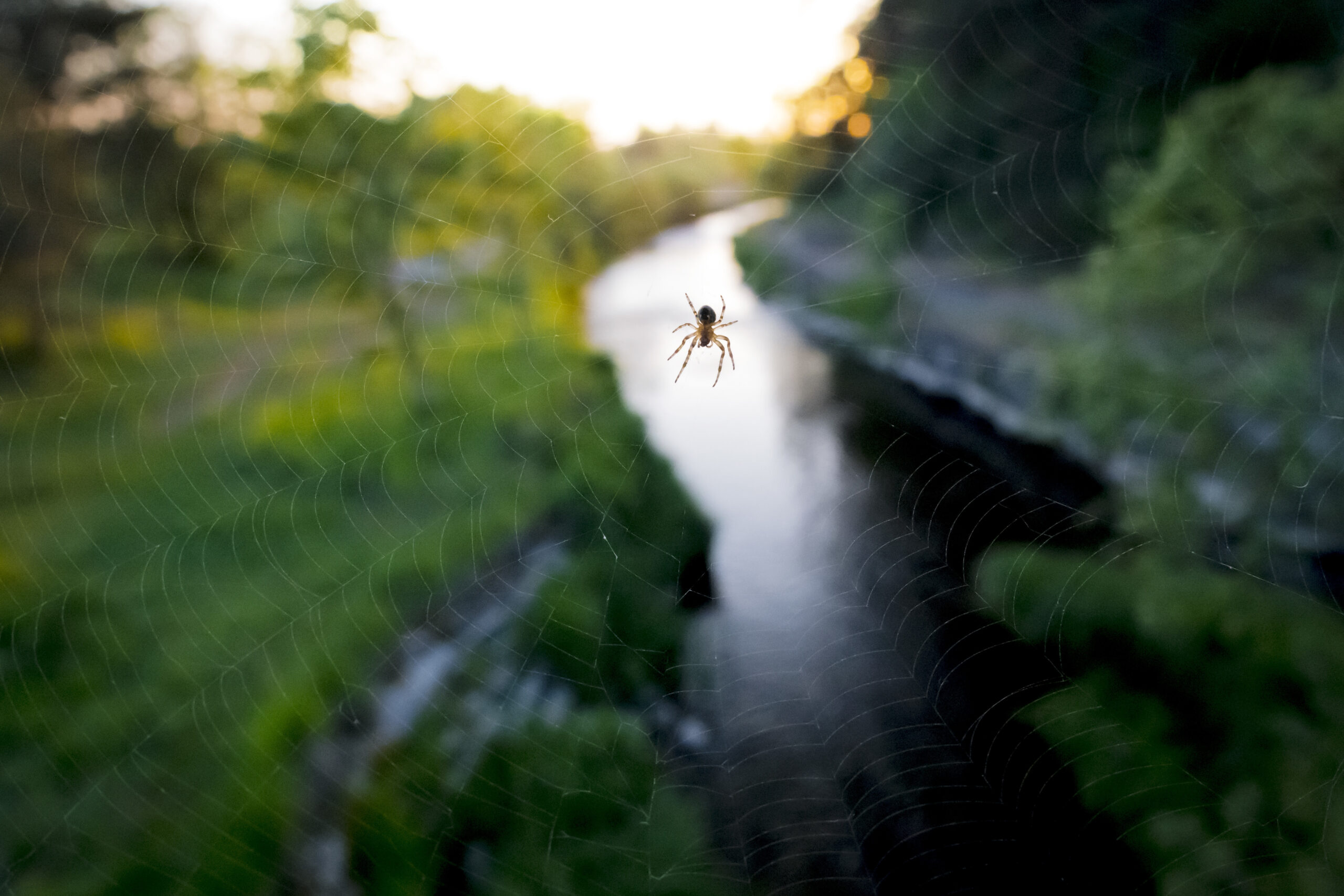When we think about monitoring air quality, modern sensors, apps, and technologically advanced laboratories immediately come to mind. But did you know that your perhaps most discreet “sensor” lives in the corner of your room, has eight legs, and patiently waits for prey? Spiders, those quiet inhabitants of our environment, know more about the air than we might think.
A Web That Catches More Than Prey
A spider’s web is a true marvel of Nature’s engineering: elastic, strong, and almost invisible. But besides mosquitoes and flies, the web also traps fine dust particles, soot, pollen, and even microscopic traces of exhaust gases.
The more polluted the air, the faster the web gets dirty. This means a spider’s web acts somewhat like an air quality indicator. If a web in your yard or the corner of your apartment turns grey after just a few days, it might be a good idea to check the air you’re breathing.
Yet spider webs hold many more fascinating secrets:
- Rapid construction – many spiders can spin a web in under an hour, and some even in just half an hour.
- Supermaterial – spider silk is five times stronger than steel of the same thickness, while remaining incredibly light and elastic.
- Silk for different purposes – spiders use several types of threads: some for the structural framework, others for sticky spirals that capture prey.
- Daily renewal – most spiders build and renew their webs almost every day, often eating the old web to recycle valuable proteins.
- Vibration antenna – the web is not just a trap but also a sensory device: it detects the slightest movements and even signals from other spiders.
Spiders as Bioindicators
Scientists have discovered that spider silk can contain traces of heavy metals and other pollutants. By analysing these fine threads, it is literally possible to “read” the quality of air in a given area.
In clean, natural environments, webs remain transparent longer, and spiders have a more varied diet. In cities, where the air is full of micro-particles, spider webs get dirty faster and lose effectiveness, so spiders must rebuild them more frequently.

Spiders and Scientists on the Same Web
Air quality doesn’t affect humans alone. If pollution eliminates sensitive insect species that are food for spiders, the spiders disappear too. Without spiders, the surviving, often hardier and more troublesome insect species can multiply uncontrollably, making our summer evenings even “buzzier.”
This is one of the reason why scientists increasingly study spiders, their webs, and their connection to the environment. They are not only masters of survival but also invaluable indicators of nature’s condition. These topics will also be discussed at the 35th European Congress of Arachnology, held this year in Zadar, which we proudly sponsored – because we believe that understanding natural “sensors” goes hand in hand with the development of advanced technological systems for monitoring air quality.

Nature Speaks, Technology Translates
Next time you see a web on a window, don’t just see it as a dusty nuisance. It could be your little, natural pollution detector. And if the web seems to get dirty too quickly, it may not just be the spider: it might be the air around you.
A spider’s web can hint at a problem, but the Sensees Indoor Air Quality Sensor measures it precisely and alerts you in real-time, without guessing and without the dusty web.

So, while the spider quietly records changes in the air from its corner, Sensees Indoor sensors let you understand them immediately, clearly, and measurably. Nature gives the signals, and technology translates them into data that help keep your home or office safe and healthy to breathe in.

